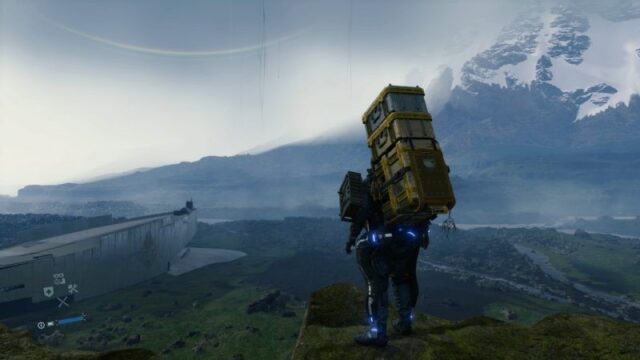Facing the Doom of Extinction. The Narrative of Death Stranding.
By Andreas J. Pratama
The recently released game Death Stranding from the famed Hideo Kojima may not be for everybody. The video game that tells the story of a war – torn America by Nuclear disaster. The world is empty but quickly reclaimed by nature and left haunted by the entities called B.T (Beached Things). These BTs are those trapped in the world of the dead but unable to quite pass on. Kojima’s signature darker tone and his impulses to include anything nuclear related has somewhat become his specialty ever since the metal gear solid franchise; perhaps it’s his relationship as a Japanese with the history. The Japanese are the ones that knows best the bitterness of defeat and annihilation at the hands of nuclear disaster.

Death stranding employs Norman Reedus (as Sam Porter Bridges). An ambition Kojima has been wanting to do for quite a while now to include Hollywood actors and actresses in his game. He even managed to get Mads Mikkelsen and Lea Seydoux one of the new bond girl up in his new game. But at the heart of Death Stranding is the narrative, the story in which humanity, or in this case, Americans attempt to rebuilt their nation through re-establishing the connections they once had. To gather whatever was left surviving in the harsh post-apocalyptic lands.
Ludology wise, Death stranding is often put critically as a glorified courier simulator. It consists of nothing more than carrying luggage and contrabands towards the destination one is supposed to go, but what makes it interesting is the fact that the terrain is the main challenge to traversing the post-apocalyptic landscapes. The weight that the player is carrying will send Sam tumbling down hills if tripped by rocky slopes. Balancing and progressing slowly to maintain stability becomes a constant challenge. This experience is unique, for no other games have attempted this game design before. However, on top of that there are of course action elements involved such as gunplay, and combats that the players sought after, but this is not its main oeuvre for killing will leave a grave consequence in the form of replicated nuclear explosion leaving the area a huge crater devoid of life.

What made death stranding truly shines is its online component. Being in the lonely world of post apocalypse player will have to face the punishing traversal alone, rocky shores are difficult to climb, grasslands are adorned with strong-streamed rivers being left alone to their own device players are left with the options to help each other over online connections. With this feature, the once uninhabitable lands of America become much more traversable. From my experience, I have seen a unique breed of ludological approach where players are constantly easing each other’s burden. This is of course different to dark soul’s comment system which can be misleading at time. Death stranding instead provided players with a unique way to help each other by building bridges, roads, and providing vehicles. However, this is not all. The luggage and contraband one supposes to deliver can even be picked up by other couriers in the world and be delivered to their intended destination.
The premise of this game was about survival, and in delivering that, the game has provided a unique experience that could exist only when playing online. This interesting interaction between players created an organic reciprocal balance where the difficulties of the game is constantly being tweaked depending on the availability of the structures built, upgraded, or modified by the players. This is what the game is all about, notwithstanding any reviews I see online, I can sense that Kojima is starting to drift his game design towards reflective ideas, learning, and simulation not for the same of “fun” but rather to deliver and discuss idea through gaming.


Comments :